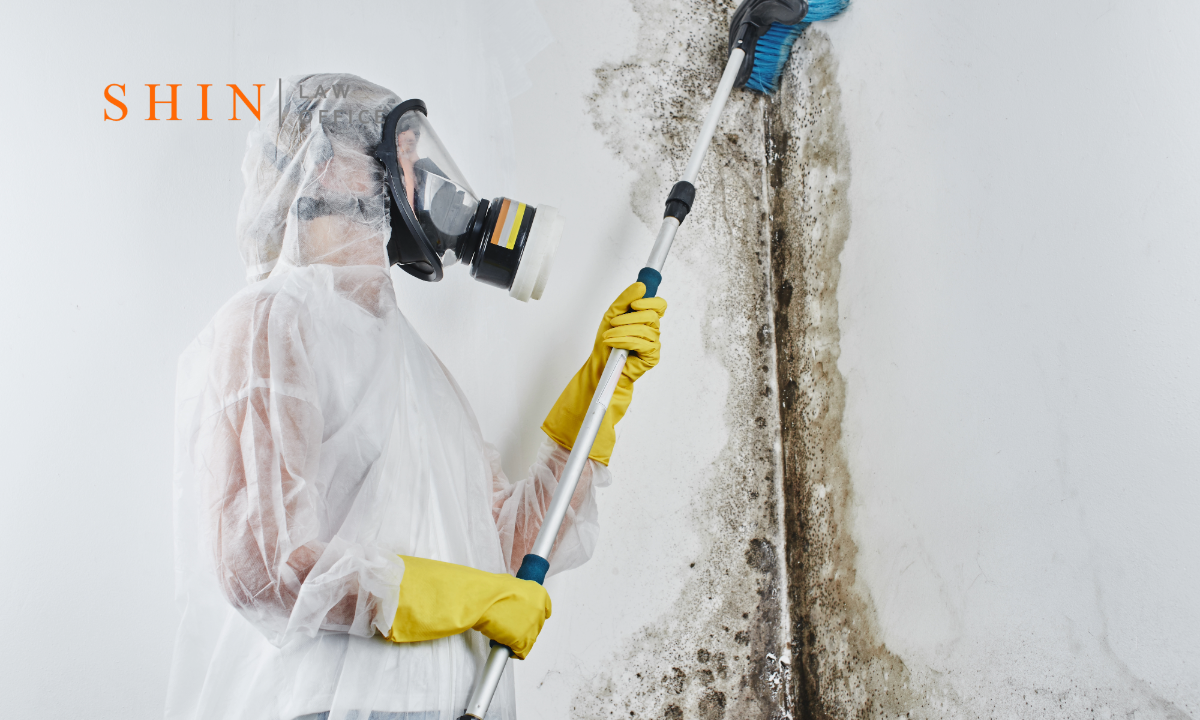By Anthony I. Shin, Esq. | Attorney at Law | Toxic Torts | Shin Law Office
The Hidden Threat Inside Modern Buildings
When people think of mold, they usually picture old, damp basements or neglected homes.
But in my experience handling toxic tort cases across Northern Virginia, some of the worst mold problems have appeared inside modern, high-end condominiums and office buildings right here in Crystal City.
These are sleek, luxury towers with rooftop amenities, cutting-edge HVAC systems, and premium finishes.
Yet behind the walls and ventilation ducts, mold quietly spreads where few people think to look.
Mold contamination in large buildings is especially deceptive.
The problem doesn’t start with something obvious like a flooded floor or burst pipe. It often begins in the air system itself.
When an HVAC system isn’t properly maintained or the air filtration system fails, humidity builds up inside ducts and vents, creating the perfect conditions for mold growth.
Once spores take hold, they circulate through the entire building, spreading through the same air that residents and employees breathe every day.
How Mold Grows in Crystal City’s Luxury Towers
HVAC Systems and Poor Air Filtration
Most high-rise buildings in Crystal City rely on complex, centralized HVAC systems to control air quality and temperature. These systems require precise maintenance to prevent moisture buildup. When filters are not replaced on schedule or when condensation drain lines are blocked, humidity can accumulate in the ductwork. Mold spores then grow on coils, filters, and insulation, releasing microscopic toxins into the air.
Rooftop Water Intrusion and Design Flaws
Another common source of mold in these buildings comes from above. Rooftop systems such as cooling towers, skylights, or poorly sealed HVAC units can allow water intrusion. Once water seeps through roof membranes or flashing, it can travel behind walls, into ceilings, and even into common ventilation shafts. I’ve seen cases where a single unnoticed rooftop leak led to toxic mold spreading across multiple floors before anyone realized what was happening.
The Impact on Residents and Office Workers
Health Symptoms You Shouldn’t Ignore
Building occupants often begin to notice something is wrong long before management does. Persistent coughing, headaches, fatigue, or worsening asthma can all be signs of mold exposure. Office workers sometimes report “sick building syndrome,” a term used when multiple people in the same workspace develop similar respiratory or allergy symptoms due to poor indoor air quality.
Property Damage and Financial Loss
For condo owners, mold can reduce property value and create disputes with management companies or homeowners associations. In commercial settings, business owners may face costly interruptions, lost revenue, and employee health claims if the mold contamination is linked to building maintenance failures.
Legal Accountability in Mold Exposure Cases
Who Is Responsible When Mold Spreads Through a Building
Determining liability in these cases can be complex. Depending on the situation, the responsibility may fall on the property management company, the HVAC maintenance contractor, the builder, or even the architect if design flaws led to moisture intrusion. My role as your attorney is to investigate every possible source of negligence and identify where the system failed.
Proving Negligence in HVAC-Related Mold Claims
To build a strong case, evidence must show that the responsible parties failed to perform regular inspections, replace filters, or maintain drainage systems. Expert environmental testing and air sampling can confirm contamination levels, and HVAC maintenance logs can reveal patterns of neglect. These details often make the difference between a dismissed complaint and a successful toxic tort claim.
How I Help Clients Protect Their Rights
When I represent residents or business owners affected by building-related mold, my goal is to uncover the source and hold those responsible accountable. Mold contamination in high-rise buildings is rarely just an accident. It’s often the result of poor maintenance, ignored warnings, or shortcuts in construction.
I work with environmental experts, HVAC engineers, and medical professionals to build a clear picture of how mold developed and how it affected your health or property. Whether you are a tenant, condo owner, or business operator, you deserve safe air and a building that meets modern safety standards.
Taking Action Before the Damage Spreads
If you live or work in a Crystal City high-rise and have noticed musty odors, unexplained health symptoms, or water stains near vents or ceilings, don’t ignore them. Mold spreads invisibly through the air system and becomes more dangerous over time. The sooner you act, the easier it is to trace the problem, secure evidence, and demand remediation.
If management or your landlord dismisses your concerns, I encourage you to seek legal counsel. Toxic mold exposure is preventable, and no one should be forced to breathe contaminated air in their own home or workplace.
— Anthony I. Shin, Esq.
Principal Attorney | Shin Law Office
Call 571-445-6565 or book a consultation online today.




